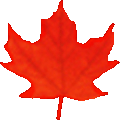
Common menu bar links
Institutional Links
-
Translation Bureau
Language Portal of Canada
-
TERMIUM Plus®
-
Index N
- namable
- nameable
- names of Canadian universities (Linguistic recommendation from the Translation Bureau)
- names of government departments (Linguistic recommendation from the Translation Bureau)
- nano-
- nas-
- naso-
- National Assembly
- National Capital Region
- nay
- NB
- N.B.
- NDT
- near
- necessary prerequisite
- need
- needs
- neither … nor
- neo-
- Net (Linguistic recommendation from the Translation Bureau)
- neuro-
- never used to
- New Brunswick
- Newfoundland and Labrador
- Newfoundland Daylight Time
- Newfoundland Standard Time
- new French spelling (Linguistic recommendation from the Translation Bureau)
- new innovation
- new recruit
- Nfld.
- NL
- N.L.
- no
- noci-
- noct-
- nocti-
- non-
- nona-
- non-flammable
- non-inflammable
- non sequitur
- Northwest Territories
- Norwego-
- notify
- not quite
- noun
- noun clause
- noun phrase
- noun used as an adjective
- Nova Scotia
- Nowel
- NS
- N.S.
- NST
- NT
- NU
- nulli-
- number
- numbers: age
- numbers: clarity
- numbers: comparative and inclusive numbers
- numbers: consistency
- numbers: decimal fractions
- numbers: governmental and historical designations
- number sign
- numbers in compound adjectives
- numbers: market quotations
- numbers: mathematical usage
- numbers: money
- numbers: names of organizations
- numbers: plurals
- numbers: quantities and measures
- numbers: ratios
- numbers: reference numbers
- numbers: Roman numerals
- numbers: round numbers
- numbers: spelled-out numbers
- numbers starting a sentence
- numbers used as nouns
- numbers: votes and scores
- number symbol
- numeric date
- Nunavut
- N.W.T.
Proactive Disclosure
Important notice
Writing Tips has been archived and won’t be updated before it is permanently deleted.
For the most up-to-date content, please consult Writing Tips Plus, which combines content from Writing Tips and The Canadian Style. And don’t forget to update your bookmarks!
Search and Functionalities Area
numbers: comparative and inclusive numbers
Follow the guidelines below when writing comparative and inclusive numbers.
Comparisons
For general comparisons note the following:
- five times as great (not five times greater)
- one fifth as large (not five times smaller)
Note that "a four-to-one margin" is meaningless; "a margin of three" is correct.
Consecutive numbers
Consecutive numbers are joined by or or and, except where intermediate quantities are possible:
- row 5 or 6
- rows 5 and 6
but
- a range of 5 to 6 (rather than a range of 5 or 6)
In references to successive pages, p. 15, 16 indicates matter that is disconnected in the two pages, whereas pp. 15–16 indicates that the subject is continuous from the first page to the second.
Inclusive numbers
Opinions differ on the proper forms for inclusive numbers written as numerals. Of course, it is always acceptable to write both numbers in full.
However, if you want to abbreviate the second number, follow the principles below to ensure clarity.
Repeat all digits in numbers below 100:
- 4–10
- 67–68
- 82–99
Repeat all digits where the first number is 100 or a multiple of 100:
- 100–138
- 700–706
- 1900–1901
Where the first number is in the range 101–109, in multiples of 100, use the changed part only in the second number, and omit unnecessary zeros:
- 103–9
- 808–18
- 1007–8
Where the first number is in the range 110–199, in multiples of 100, use two or more digits in the second number, as needed:
- 435–37
- 1986–87
- 3740–75
With numbers of four digits, use all digits in the second number if three of them change:
- 1889–1915
Note the following special cases:
- 899–900 (second number is even hundred)
- 398–396 BC (all digits repeated in years BC)
© Public Services and Procurement Canada, 2025
TERMIUM Plus®, the Government of Canada's terminology and linguistic data bank
Writing tools – Writing Tips
A product of the Translation Bureau


